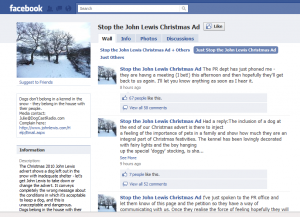You’d think that voters would be used to politicians making promises that they do not, or can not, abide by once in office. Ah, well, maybe so – but students are a different thing altogether. Young, optimistic, unsullied by the pervasive cynicism that creeps in once you’ve been taken in by people you voted for time and time again, little do they realise that soon, they too will be rueing their voting booth decision.
Take the Lib Dems. They promised that not only would they not support a rise in tuition fees, but they would phase out fees completely over six years. Perhaps they promised this because the very idea of the Lib Dems getting into power was impossible even to conceive. And yet, here they are in Government as part of the ConDem coalition, having to make a choice between keeping their word to their core voters or keeping their jobs as ministers.
It doesn’t matter how often the politicians go on telly and explain why they are backing the rise, the voters who they are trying to reach are unlikely to change their opinions (especially when it was the same politicians that helped radicalise voters against such a rise in the first place). In fact, this group of student protestors has a much greater chance of success than their predecessors who protested against the Poll Tax and the Iraq war. This time it’s not just a policy that the students are disputing, but what they see as a betrayal by Liberal Democrat MPs, and as they are protesting against individuals making specific voting choices they stand a much better chance of success.
One thing that 2010 has shown is that people power is alive and kicking. That campaigning, which had previously been confined to relatively small groups of passionate people, can be taken to social networks and made viral. Suddenly John Smith, who may never have protested against anything in his life, finds himself sitting in the freezing cold outside Top Shop to protest against Philip Green’s tax status with a bloke he met on Twitter who he knows only as Sox78.
2009 saw Rage Against the Machine’s “Killing in the Name” become the Christmas number one after a Facebook campaign was launched to prevent the X-Factor winner taking the premium spot in the charts yet again. 2010 sees an even cheekier attempt at defeating the X-Factor as campaigners seek to get “The Sound of Silence” (dubbed “Cage Against the Machine” in honour of its composer John Cage) to number one in the charts (the Facebook group currently has over 68,000 likes).
Even branding hasn’t escaped the wrath of the consumer with the web going slightly mad at the new GAP logo back in October. After a few days of parodies and twitter trending, GAP backed down, saying that they would keep the old logo and approach any future logo change in a different way to avoid a repeat of the outcry. Yes, the brand looked as though it was backing down, but the people campaigning against the logo respected GAP for listening to their opinions and the relationship between consumer and brand remains strong.
Hamleys decided to cut short the stay of its in-store reindeer and cancelled the planned penguin pool after a Facebook and Twitter campaign raised animal welfare concerns. Using the hashtag #sHamleys, the campaign aimed to stop Hamleys from going ahead with its plans and succeeded. Rather than engaging in a prolonged debate on the events, which would probably have made the issue many times worse, the store simply decided to cancel and issue a statement.
Whether the protest is completely virtual or simply organised virtually (such as the UK Uncut tax or the tuition fees protests) it’s clear that the UK will see much more activism in 2011. The question is, how will those on the receiving end choose to handle it?



